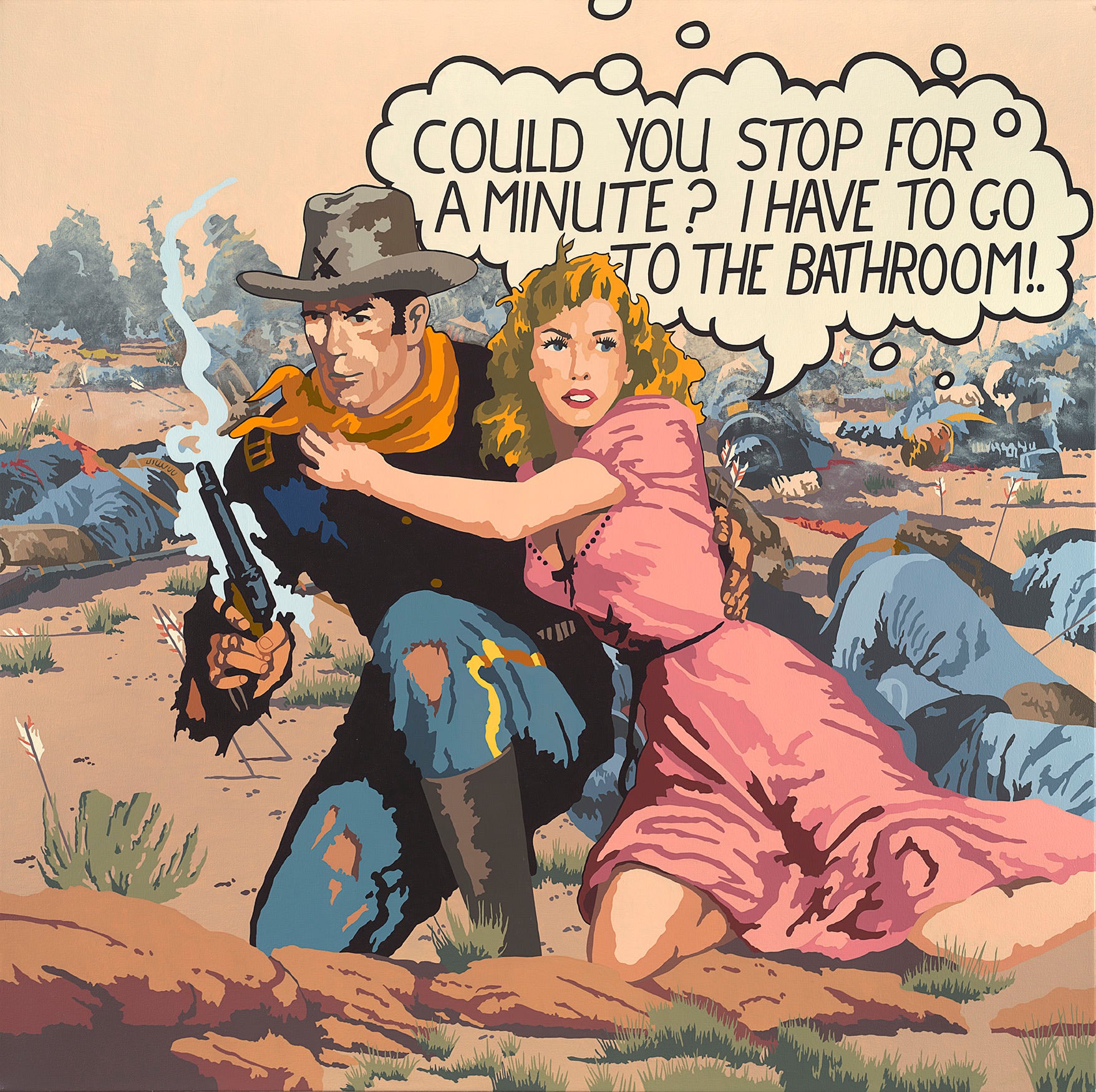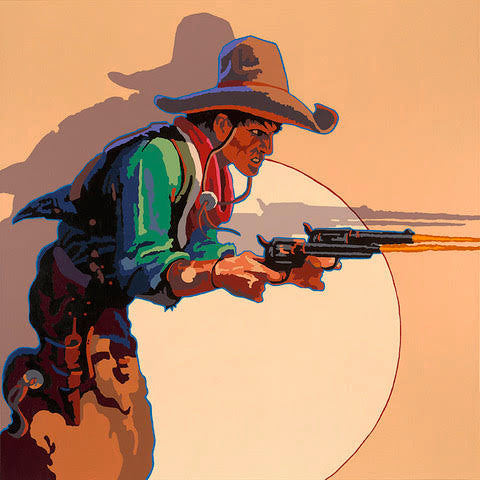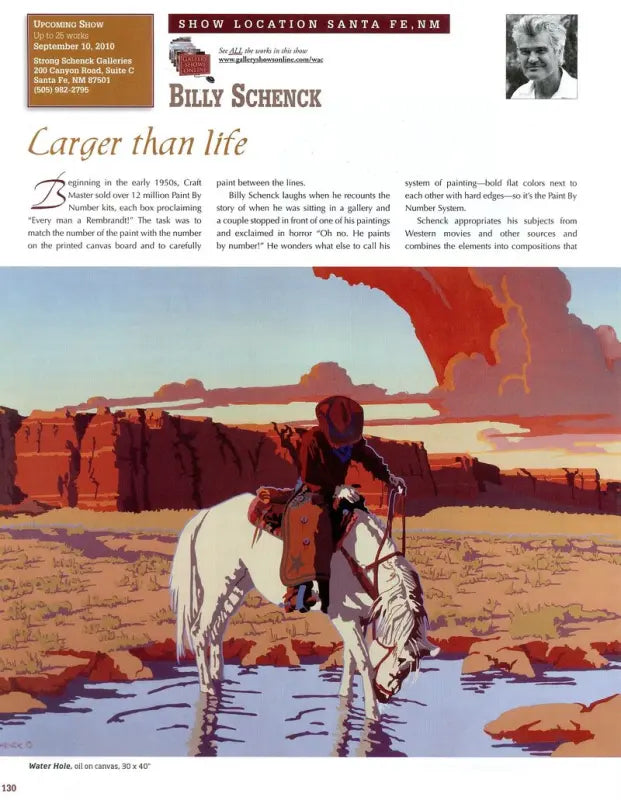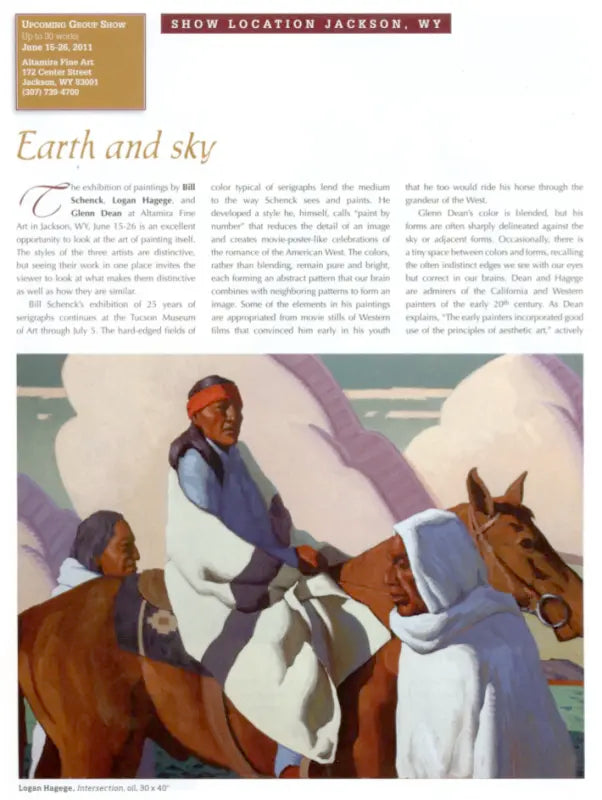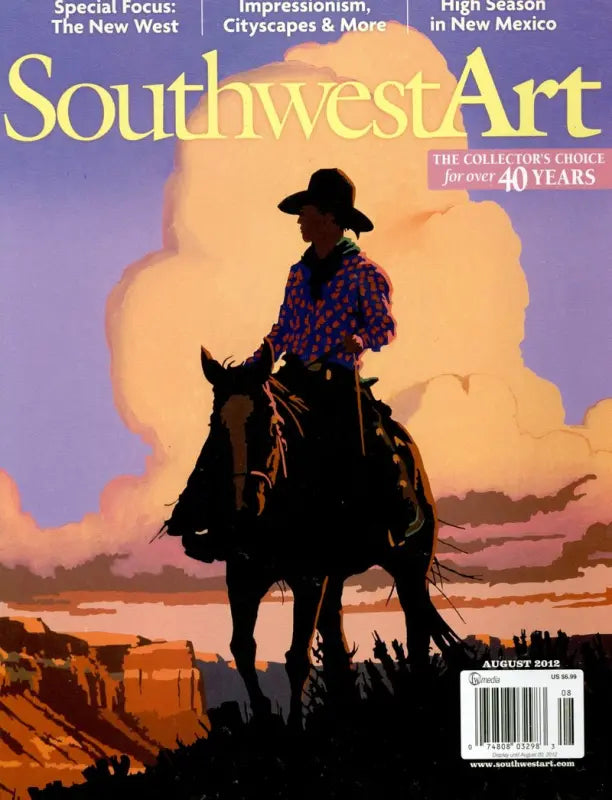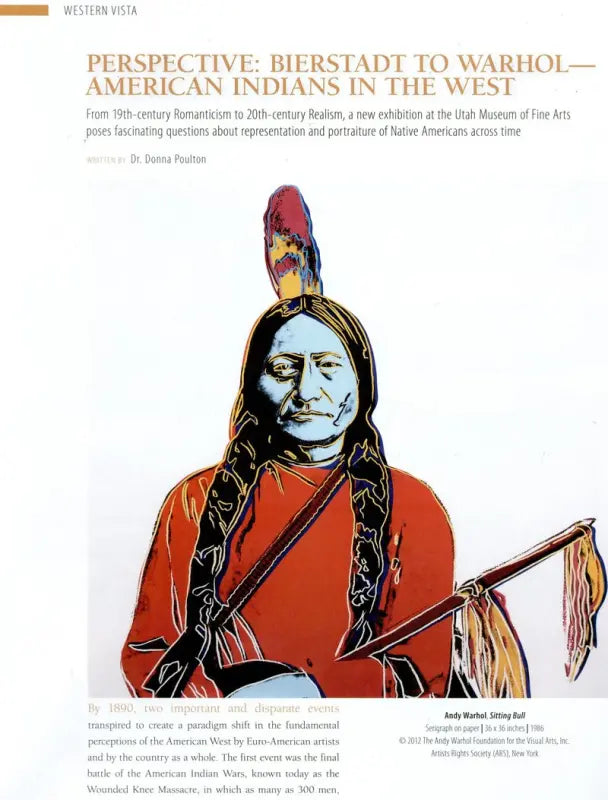Billy Schenck was born in a small town north of Columbus, Ohio, in 1947. He spent childhood summers exploring the wilderness near Lander, Wyoming. He attended Columbus College Of Art and Design from 1965 to 1967, and received his BFA from Kansas City Art Institute in 1969. While still a young man, he moved to New York where he was influenced by the Photo-Realists, Color Field, and Minimalist painters in vogue at the time. When he was 24 years old, his first solo show in New York City sold out.
Early in his career, Schenck became known for utilizing cinematic imagery, reproduced in a flattened, reductivist style, where colors are displayed side-by-side rather than blended or shadowed. His art incorporates techniques from Photo-Realism and Pop Art to both praise and mimic classic western images. His work is characterized by hot colors, surreal juxtapositions and patterning which explore clashes between wilderness and civilization, the individual and community, nature and culture, freedom and restriction.
In the mid-1970's, the work exemplified in his paintings drew him west, where he split his time between Wyoming and Arizona. He now lives in Santa Fe, New Mexico. His work can be found in numerous major collections throughout the world, including the Smithsonian Institution, Denver Art Museum, The Autry Museum of Western Heritage, Booth Western Art Museum, Tucson Museum of Art, and many more. Schenck's work has been the subject of four museum retrospectives, including The West as It Never Was, at the Albrecht Kemper Museum of Art.
The 2013 illustrated book, Schenck in the 21st Century: The Myth of the Hero and the Truth of America, by Amy Abrams, features paintings, caption drawings and caption paintings produced by Schenck from 2000-2012. A book of his serigraphs, Bill Schenck: Serigraphs 1971-1996, was published in 2010 in conjunction with a touring retrospective of the same title.


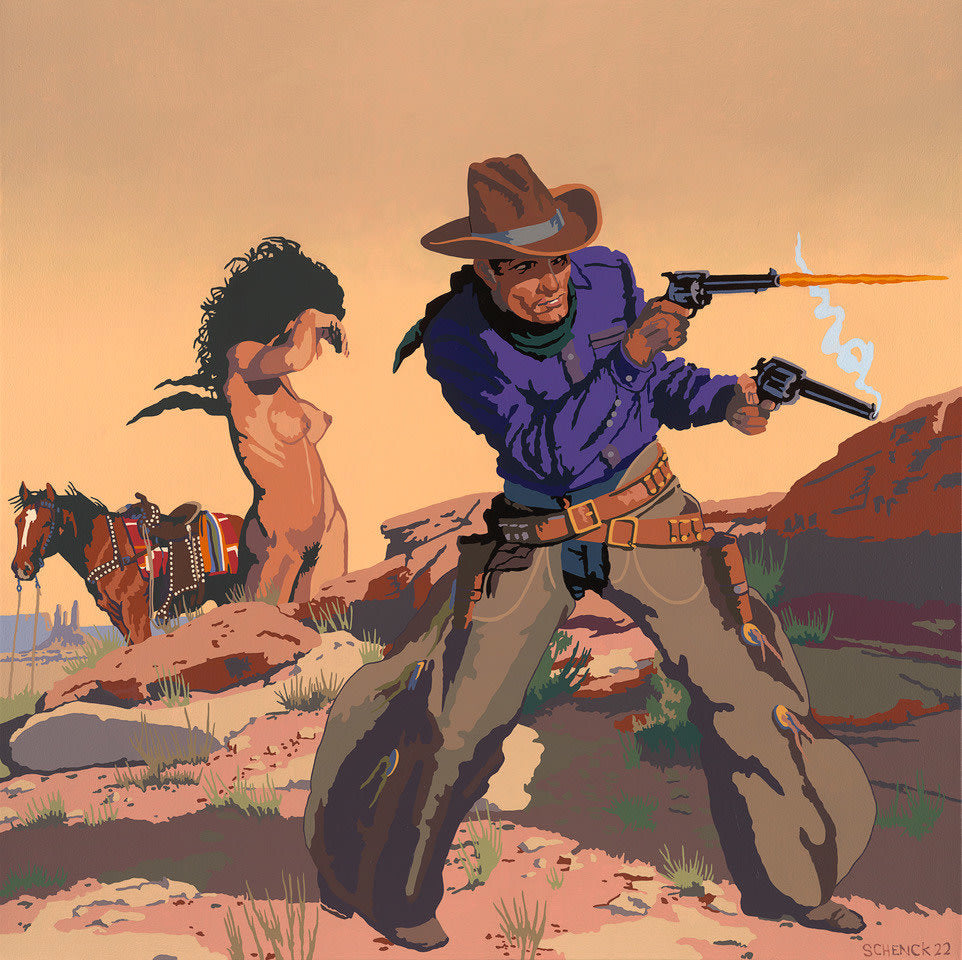 Vendor:Altamira Fine Art
Vendor:Altamira Fine Art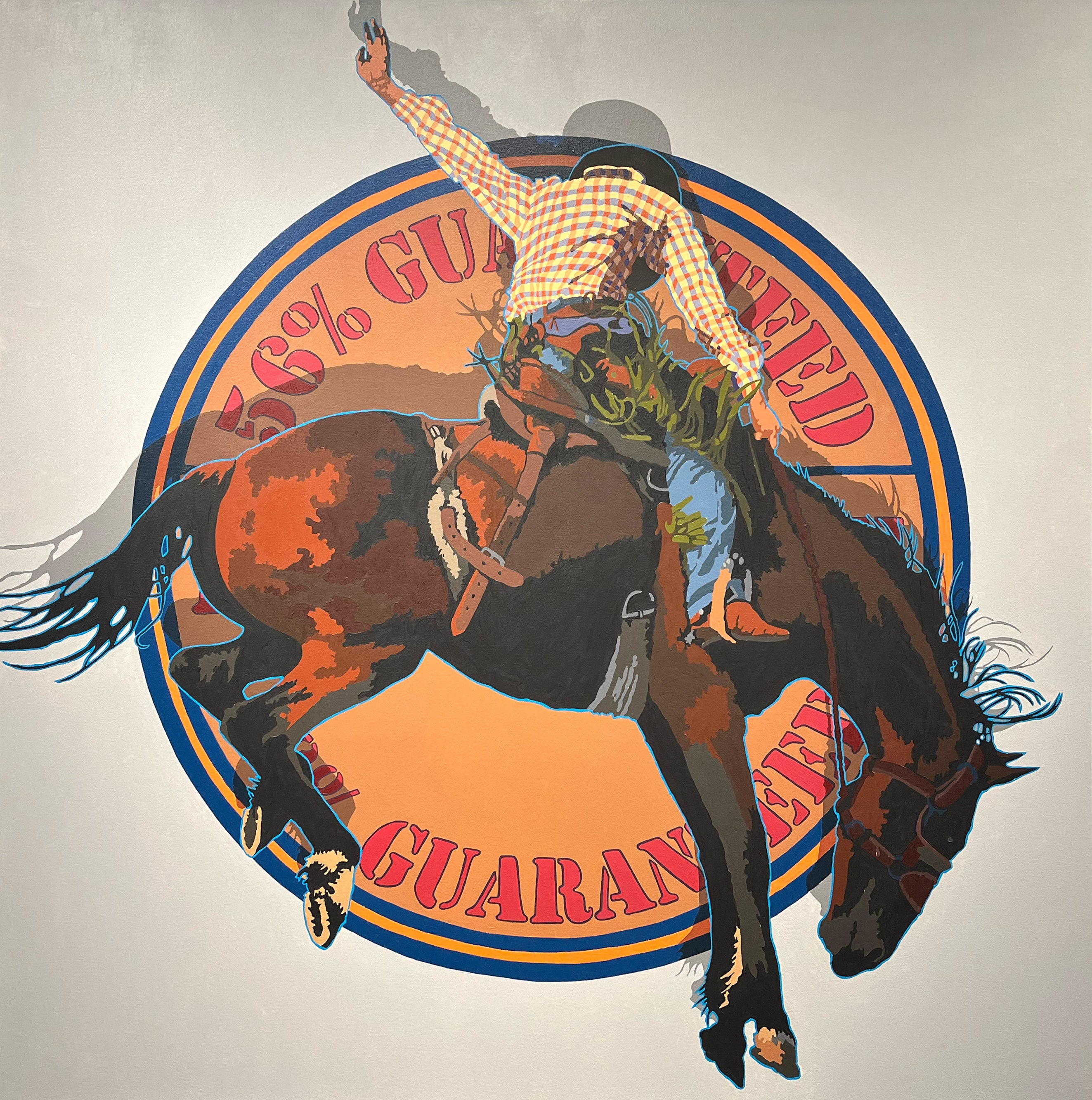 Vendor:Altamira Fine Art
Vendor:Altamira Fine Art